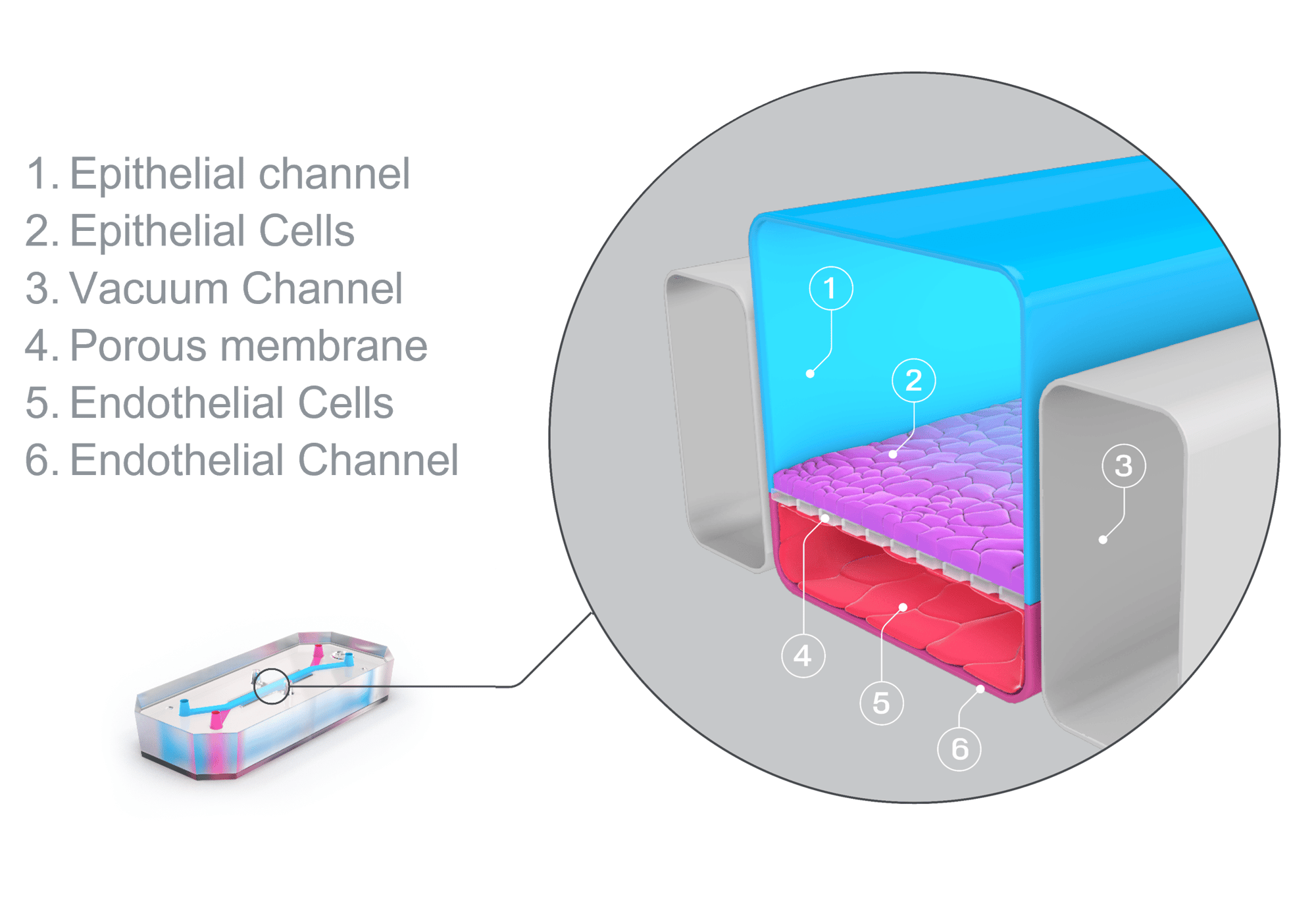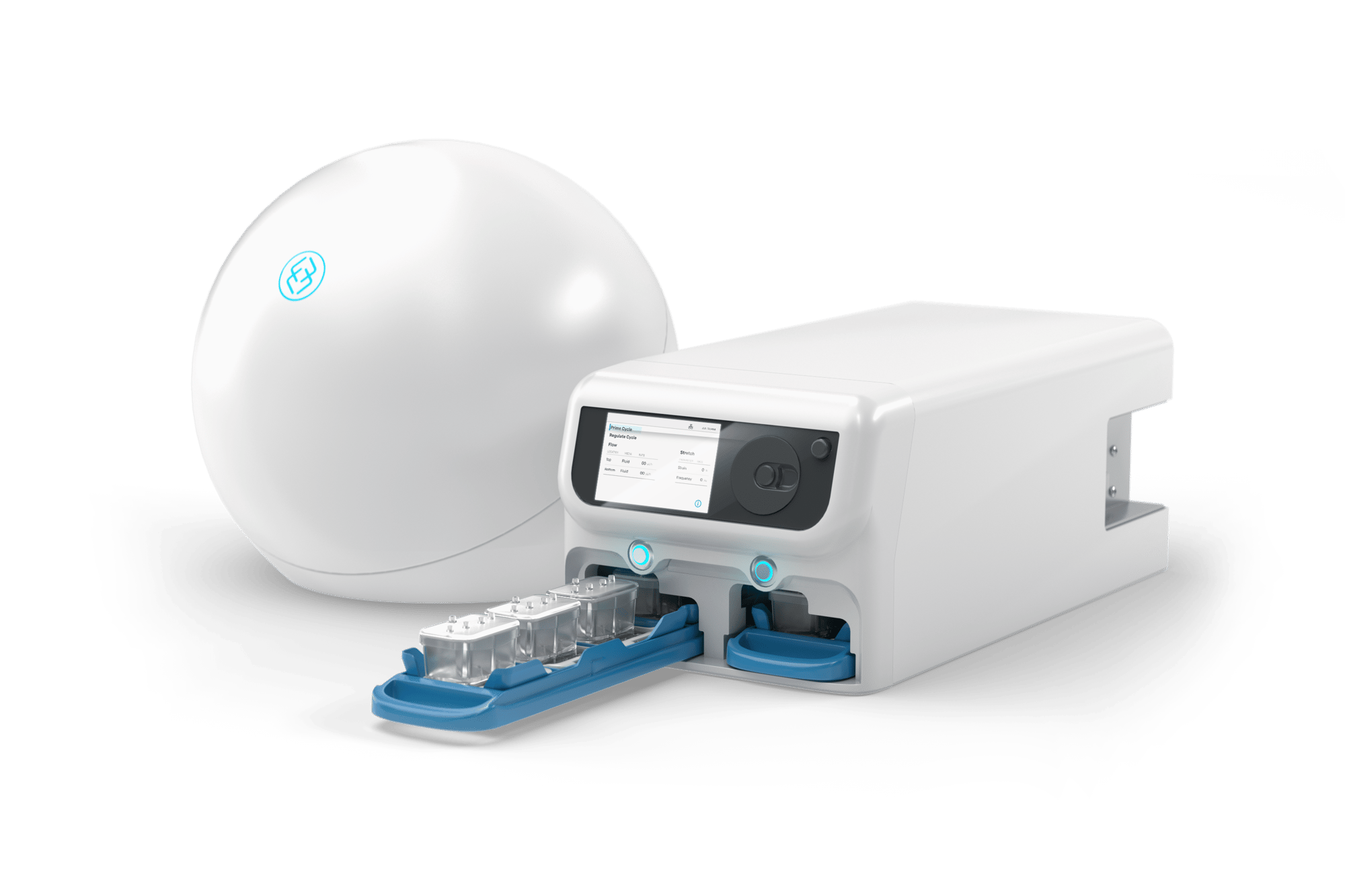It’s time for a human-centric approach to infectious disease research.
Despite decades of research, infectious diseases continue to cause ~14 million deaths every year. A major factor? Over 90% of scientists across academia and industry agree that a major limiting factor is conventional research models, saying their progress is at least sometimes limited by available models.
To solve this pressing challenge, researchers are turning to Emulate Organ-Chips to advance their understanding of human infectious disease.
Ready to increase the human relevance of your studies? Read on to learn more about the challenges of infectious disease research and how Organ-Chips can help.

The challenge of infectious disease research
Infectious disease is a major cause of global mortality, causing ~14M deaths annually. In the past 3 years, an additional 7M+ people have died from the COVID-19 pandemic alone.
Unfortunately, research into viral and bacterial infection has been hampered by the limitations of conventional research models. Conventional in vitro models often fail to develop efficient viral infection or are quickly overgrown by bacterial infection. Meanwhile, results from animal studies often fail to translate to humans because of species differences—in fact, some infectious diseases are human-specific, meaning it is not possible to test them in animals.
How Organ-Chips can help
Organ-on-a-Chip technology gives researchers a real-time window into the inner workings of human biology.
Emulate Organ-Chips allow researchers to culture multiple human cell types in a dynamic, tissue-specific microenvironment, allowing for deeper insights into the complex and human-specific processes of infection, disease progression, and therapeutic efficacy.
These advanced in vitro models can also provide cyclic stretch, giving researchers the power to recreate the mechanical forces of breathing or intestinal peristalsis and study their effects on viral or bacterial infection.
With over 12+ peer-reviewed studies using Emulate Organ-Chips to better study infectious diseases—including COVID-19, E. Coli, and tuberculosis—only one question remains: How will you use Organ-Chips to break new ground?

Schematic of the Emulate Chip S-1 Stretchable Chip
The benefits of Organ-Chips for infectious disease research
Human-Relevant Cells
Culture human cells with physiologically relevant gene and receptor expression.Cell-Cell Interactions
Recapitulate multicellular complexity with endothelial co-culture, enabling route-of-infectious studies.

Tissue-Specific Microenvironment
Recreate tissue-relevant mechanical forces with media flow & cyclic stretch.
Flexible Study Designs
Model a variety of organs and add in additional complexity (immune cells, microbes, therapeutics, etc.).
Need some inspiration?
There are 12+ peer-reviewed studies that use Emulate Organ-on-a-Chip technology for infectious disease research. Check out a few highlighted examples below.
THE CHALLENGE
Shigella infection causes ~700k deaths annually, but it remains difficult to study, as it only infects humans, and fails to efficiently infect conventional in vitro models.
THE APPROACH
Pasteur Institute scientists used a Caco-2 Intestine-Chip to study Shigella infection and investigate the role of mechanical forces.
THE INSIGHTS
Organ-Chips allowed researchers to dissect the fundamentals mediating Shigella invasion at the tissue scale, revealing that peristalsis plays a critical role in the infection process.
THE CHALLENGE
As SARS-CoV-2 spread in 2020, researchers struggled to investigate the mechanism of infection, as the virus often fails to infect monoculture models or cell lines.
THE APPROACH
EPFL scientists used the Alveolus Lung-Chip—which includes alveolar epithelium and endothelium—to recreate the natural infection pathway of SARS-CoV-2
THE INSIGHTS
The unique epithelial-endothelial interface provided novel insights, showing how the virus may cause blood clots by attacking endothelial cells directly rather than as a result of cytokine storms.
THE CHALLENGE
The innate immune responses of the lung play a crucial role in safeguarding against respiratory viruses. However, our understanding of these responses remains limited, in large part because the mechanical forces of the human lung are not present in conventional in vitro models.
THE APPROACH
Wyss Institute scientistcs modeled influenza A infection and therapeutic efficacy using an immunocompetent version of the Alveolus Lung-Chip that included primary epithelium, endothelium, and circulating immune cells.
THE INSIGHTS
The dynamic chip microenvironment enabled researchers to model viral receptor expression, strain-dependent infectivity, and system-level host responses, allowing them to better understand disease pathogenesis and identify promising therapeutic targets.THE CHALLENGE
Understanding why humans are more susceptible to enterohemorrhagic Escherichia coli (EHEC) infection than mice poses a challenge due to complex host-pathogen interactions and differences in gut microbiomes.
THE APPROACH
Researchers investigated whether species-specific microbiome metabolites played a role in EHEC-induced intestinal damage by modeling EHEC infection in the presence of human or mice metabolites.
THE INSIGHTS
This study reveals that certain human-specific microbiome metabolites actively promote EHEC pathogenicity, potentially explaining higher susceptibility in humans and laying the foundation of the development of therapeutic microbes to prevent and treat human infection.
THE CHALLENGE
Viral infection-induced exacerbation of asthma is a major health burden, but remains poorly understood due to the lack of human-relevant lung airway models.
THE APPROACH
Merck and Emulate researchers used the Airway Lung-Chip to model key features of rhinovirus-induced asthma exacerbation and evaluate immunomodulatory therapies.
THE INSIGHTS
Researchers succesfully modeled HRV infection, replicating key aspects of the complex pathology and inflammatory response seen in the human airway and demonstrating the ability to assess immunotherapeutic efficacy with Organ-Chips.
A complete solution for Organ-Chip culture
The Human Emulation System combines instruments, consumables, and software, enabling unprecedented insights into human biology across a variety of organs.
- Zoë-CM2® Culture Module: Automates flow & stretch for up to 12 Organ-Chips
- Orb-HM1® Hub Module: Provides gas and stretch to up to four Zoë-CM2 Culture Modules
- Organ-Chip Kits: BioKits include pre-qualified cells, for an all-in-one solution for modeling the liver, kidney, or intestine, while Basic Research Kits enable researchers model any tissue using their own cell sourcing.
- Expert Support: Each system purchase includes hardware installation and scientific training from Emulate’s Organ-Chip experts.

FAQs
What are Organ-Chips?
Organ-Chips are small, flexible devices that contain two parallel channels. Many types of human-relevant cells can be seeded into these channels, including primary cells, iPSCs, organoids, and immune cells.
The channels are separated by a thin, porous membrane that creates a tissue-vascular interface for cell-cell communication. This membrane is coated with a tissue-specific extracellular matrix (ECM), helping to further drive tissue maturation as one would see
Using Emulate Organ-Chips, researchers can easily control and finely tune the media flow and cyclic stretch Organ-Chips experience, emulating the mechanical forces cells experience in the body—such as peristalsis in the intestines, breathing in lungs, and blood flow through vessels.
When combined, these features result in more in vivo-relevant gene expression, morphology, and functionality than is possible with conventional cell culture methods, leading to more human-relevant results.
What organs can be modeled with Organ-Chips?
Emulate has developed a variety of Organ-Chip models, including the Liver-Chip, Kidney-Chip, Colon Intestine-Chip, and Duodenum Intestine-Chip, with thorough characterization data and detailed culture protocols. The Lung-Chip and Brain-Chip are currently under development.
[THE WORLD IS YOUR OYSTER] Emulate team of scientific experts can also support researchers interested in modeling additional tissues. The Emulate user community has models a wide variety of tissues, including bone marrow, lymph node, vagina, and more.
What types of cell sources can be used with Organ-Chips?
A wide variety of human cells can be cultured using Emulate Organ-Chips, including primary cells, iPSCs, organoids, and immune cells.
For modeling the liver, kidney, or intestine (duodenum, colon), Emulate offers BioKits that include Organ-Chips, Pods, and pre-qualified human cells.For modeling other human tissues, Emulate offers the OpenKit, which include Organ-Chips and Pods, allowing researchers to use their own cell sourcing.
Has there been any infectious disease research published using Organ-Chips?
Yes, a wide variety of infectious disease research using Emulate Organ-Chips has been published in peer-reviewed journals. Explore the full list of publications below.
Viral Infection
| Organ Model | Infection | Link |
| Intestine | Intestine | Human Gut-On-A-Chip Supports Polarized Infection of Coxsackie B1 Virus In Vitro. Read the Paper → |
| Intesine | NL63 Coronavirus | Enteric Coronavirus Infection and Treatment Modeled With an Immunocompetent Human Intestine-On-A-Chip. Read the Paper → |
| Lung: Alveolus | SARS-CoV-2 | The cGAS–STING pathway drives type I IFN immunopathology in COVID-19. Read the Paper → |
| Lung: Alveolus | SARS-CoV-2 | Rapid endotheliitis and vascular damage characterize SARS-CoV-2 infection in a human lung-on-chip model. Read the Paper → |
| Lung: Airway | Pseudo SARS-CoV-2 | A human-airway-on-a-chip for the rapid identification of candidate antiviral therapeutics and prophylactics. Read the Paper → |
| Lung: Airway | Human Rhinovirus | A Microengineered Airway Lung Chip Models Key Features of Viral-induced Exacerbation of Asthma. Read the Paper → |
| Lung: Airway & Alveolus | SARS-CoV-2 | Self-assembling short immunostimulatory duplex RNAs with broad-spectrum antiviral activity. Read the Paper → |
| Lung: Alveolus | Influenza | Mechanical control of innate immune responses against viral infection revealed in a human lung alveolus chip. Read the Paper → |
Bacterial Infection
| Organ Model | Infection | Link |
| Intestine: Colon | E. Coli | Species-specific enhancement of enterohemorrhagic E. coli pathogenesis mediated by microbiome metabolites. Read the Paper → |
| Intestine: Jejunum | E. Coli | Mechanical Stimuli Affect Escherichia coli Heat-Stable Enterotoxin-Cyclic GMP Signaling in a Human Enteroid Intestine-Chip Model. Read the Paper → |
| Intestine: Caco-2 | Enteric Pathogens | 4D live imaging and computational modeling of a functional gut-on-a-chip evaluate how peristalsis facilitates enteric pathogen invasion. Read the Paper → |
| Intestine: Caco-2 | Shigella | Bioengineered Human Organ-on-Chip Reveals Intestinal Microenvironment and Mechanical Forces Impacting Shigella Infection. Read the Paper → |
| Lung: Alveolus | Mycobacterium tuberculosis | A lung-on-chip model of early Mycobacterium tuberculosis infection reveals an essential role for alveolar epithelial cells in controlling bacterial growth. Read the Paper → |
| Bladder | UPEC (E. Coli) | Dynamic persistence of UPEC intracellular bacterial communities in a human bladder-chip model of urinary tract infection. Read the Paper → |
Are there protocols for Organ-Chip culture and infectious disease studies?
Emulate offers detailed protocols for culturing the Liver-Chip, Kidney-Chip, Duodenum Intestine-Chip, and Colon Intestine-Chip, as well as a protocol for general Organ-Chip culture that can be adapted to your tissue of interest.
For infectious disease resarch, Emulate does not currently provide a validated protocol. However, a guideline has been created that includes links to relevant culture protocols, important factors for designing studies, considerations for BSL3 studies, and reference tables with key details for
peer-reviewed publications. To further support Organ-Chip researchers, Emulate's team of scientific experts provides detailed scientific training, as well as study design and analysis support.
Does Emulate offer fee-for-service studies?
Yes. For researchers interested in the benefits of Organ-on-a-Chip technology without committing internal resources to bringing the technology in house, Emulate Contract Research Services offer an easy way to obtain rapid and robust insights into human response.